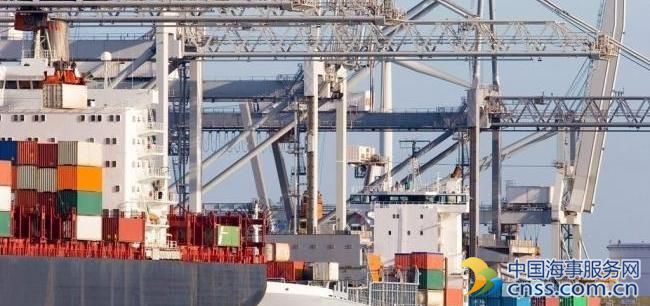World Trade Flows Grew at Slowest Pace since Financial Crisis in 2016

International trade flows grew at the slowest pace since the financial crisis in 2016, but there were signs of a modest pickup as the year drew to a close.
The Netherlands Bureau for Economic Policy Analysis said on Friday that the volume of exports and imports of goods was 1.2% higher than in 2015, marking a slowdown from the 2% rate of growth recorded in the preceding year and the smallest rise since volumes crashed in 2009.
However, there were signs exports and imports might be reviving, with volumes up 1.1% in the final three months of the year compared with the third quarter, almost double the rate of increase in the three months to September.
The sluggishness of trade in 2016 partly reflected broader weakness in the demand for goods, with developed economies recording their slowest expansion since 2013 and some large developing economies still contracting.
But many economists believe there are other reasons for low rates of trade growth since 2012, including the increased use of trade barriers other than tariffs and a reversal in the creation of so-called global value chains–the process by which large companies moved parts of their production and associated jobs overseas.
While trade flows are driven by global economic growth, economists have long believed they in turn boost growth and worry recent weakness is contributing to the anemic nature of the global expansion. There is growing concern about the impact on the global economy should U.S. President Donald Trump proceed with his pledge to remake trade relationships in an effort to protect jobs.
Speaking at a news conference Thursday, the head of Germany’s central bank warned that protectionism would undermine prosperity everywhere.
“It is international trade and interaction that underpins our prosperity, ” Jens Weidmann, president of the Bundesbank, said. “Trade promotes the spread of fresh, productive ideas and new, improved products. It is therefore trade which stimulates productivity, which in turn is what drives wages higher.”
Over the longer term, world trade has usually grown at 1.5 times the rate of total economic output. During the period of rapid globalization in the 1990s, trade grew at twice the rate of economic output.
However, it appears to have grown more slowly than total output in 2016.
Despite the end-of-year pickup, trade experts see little prospect of a significant revival in trade flows in 2017.
“The rise of protectionism is more likely to accelerate than slow down,” Raoul Leering, head of international trade research at ING Bank, said. “The uncertainty around possible import tariffs by the U.S. also leads to a ‘wait and see’ attitude of companies with regard to offshoring, another driver of trade.”
Mr. Leering expects trade flows will again grow more slowly that broader economic output in 2017.
Amid much gloom, there are some positives for world trade. An international agreement to streamline the movement of goods across borders came into force Thursday, cutting trade costs by 14.3%, according to the World Trade Organization. The Trade Facilitation Agreement should make it more affordable for smaller firms to engage in trade.
“By cutting red tape and making global supply chains more secure, the TFA will undoubtedly increase flows of cross-border business, enabling more small and mid-sized businesses to reap the benefits of trade, helping to boost economic prosperity and potentially adding $1 trillion to global merchandise exports,” Natalie Blyth, global head of trade finance at HSBC, said.
Source: Dow Jones
HEADLINES
- Do shipping markets want Biden or Trump for the win?
- All 18 crew safe after fire on Japanese-owned tanker off Singapore
- Singapore launching $44m co-investment initiative for maritime tech start-ups
- Cosco debuts Global Shipping Industry Chain Cooperation Initiative
- US warns of more shipping sanctions
- China continues seaport consolidation as Dalian offer goes unconditional